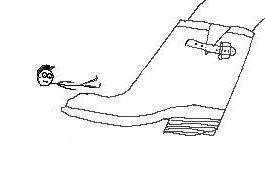Your brakes will be fine, it's the road (and your own reaction to rain) that can cause the biggest problems.
You're going to get wet. Rain will seep in places. Get over it. It's only water and once you're soaked, you can't get any wetter. Focus on your riding, not how wet you are.
The first 10 minutes or so are the worst; all the oil on the road has now floated to the top and hasn't yet washed away. Obviously 10 minutes is a rough estimate. Don't assume that at minute 11 all is good. It depends entirely on the amount of rain falling and the amount of crap on the road.
Painted lines, manhole covers, leaves, cardboard and just about everything else will be very slippery when wet. Intersections and traffic lights are horrible; vehicles sit there for extended periods and do nothing but drip oil, coolant and other evil things.
BE SMOOTH. Your bike can do 90% of the same things wet as it can dry but it needs you to direct it properly. Plan your moves and give yourself time to execute them. Sharp stops and turns will likely result in you finding out wet pavement is just as hard as dry.
PRACTICE. Next time it's raining, go for a quiet ride somewhere that has minimal traffic. Get used to the feeling of being rained on so it doesn't distract you. Find out what your controls feel like with wet gloves. Learn how your bike rides on wet pavement.
















